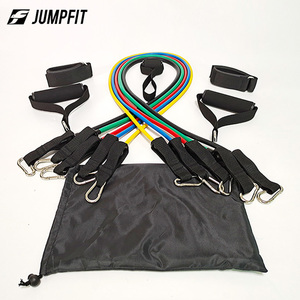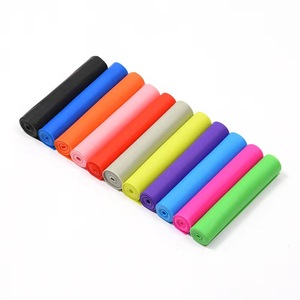(1358 products available)


































































































































































































































Theraband bands, also known as resistance bands, come in different types that are tailored to meet the needs of various exercises and users. Here are some common types:
Flat Band
These are the most common types of Therabands. They are made of latex and are flat with no handles or loops. Usually, they come in different resistance levels, ranging from light to heavy. Additionally, they are used for various exercises such as rehabilitation, strength training, and flexibility. They are popular because they are portable and can be used for full-body workouts.
Loop Bands
These bands are similar to flat bands but are looped in a circle. They come in different resistance levels and are commonly used for lower body workouts, such as glute and leg exercises. They are also great for adding resistance to pull-up exercises. They are popular among people who do lower body workouts.
Tube Bands
These bands are made of rubber and have handles at the end of each tube. The bands are attached to the handles with plastic or metal clips. Also, they come in different resistance levels and are used for various exercises, including rowing, chest presses, and shoulder exercises. They are popular because they mimic the movements of weightlifting.
Clinical Bands
These bands are used by physiotherapists and healthcare professionals. They are mostly used for rehabilitation and therapy. These bands are not only marked with clear guidance on the appropriate exercises but also have different resistance levels. They are used to help people recover from injuries by doing controlled and gradual exercises.
Professional Bands
These bands are specially made for athletes and fitness enthusiasts. They are highly durable and can withstand intense and frequent use. They are also marked with precise resistance levels, making them suitable for progressive training. They are popular among people who do professional training.
TheraBand is a renowned brand of exercise bands that is used for rehabilitation, strength training, and flexibility exercises. Their applications include:
Choosing the right Theraband bands is crucial for effective therapy and exercise. Here are some factors to consider when selecting them:
TheraBand resistance bands are crucial for physical therapy, fitness training, and rehabilitation. They come in various designs, functions, and features that cater to different needs and preferences.
Loop bands
These bands are designed to enable various exercises, such as hip and glute activation and upper and lower limb workouts. They are user-friendly and remain in position during workouts. This provides a consistent resistance and stability required for effective training. Additionally, they come in different resistance levels, which offers users the flexibility to choose bands that suit their workout intensity and capacity.
Flat bands
These bands can be used for stretching, strength training, and rehabilitation. They are versatile and lightweight. This makes them ideal for both home and on-the-go workouts. Also, they lack handles, which minimizes the risk of injury from handle snapping. This offers a safe and smooth experience during exercises.
Band with handles
These bands are designed to offer a comfortable grip and are suitable for a wide range of exercises. They feature handles that provide a secure grip and are suitable for upper and lower limb workouts. Also, they are easy to use and transport.
Spring resistance bands
These bands are designed to have handles and a spring mechanism. They provide a constant resistance, which enhances muscle building and toning. Additionally, they are durable and can be used for various strength training exercises.
Mini bands
These bands are compact and are useful in lower limb workouts and mobility exercises. They are ideal for targeted muscle activation and rehabilitation. They are compact and lightweight. This makes them easy to carry around.
Elastic bands with anchor
These bands come with an anchor at one end. They are suitable for full-body workouts. The anchor ensures the band remains in place during exercises. Also, some bands feature padded handles, which enhance comfortability during workouts.
Q1: How should someone store their Theraband if they want it to last a long time?
A1: To ensure the longevity of the Theraband, one should store it in a cool, dry place away from direct sunlight. It should also be kept away from areas with high temperatures, such as the bathroom, as heat can make the rubber deteriorate faster. Additionally, avoid contact with oils or lotions, as they can damage the band. It is best to store the band flat or rolled up in a zip lock bag.
Q2: Are Therabands useful for people who are not working out but are just looking to improve their strength?
A2: Absolutely! Therabands are great for people who want to improve their strength regardless of their workout status. They are great for doing some physical rehabilitation, and even health experts recommend them to people seeking to increase their muscle strength and joint stability, mainly if they have yet to be in a gym or performed any intense workout to avoid soreness.
Q3: Can users incorporate their Theraband into other workout routines?
A3: Users can undoubtedly incorporate the Theraband into other workout routines. It can be used in Pilates, yoga, and even physical therapy exercises. The band will add more resistance to the workout, making it more intense and helping one achieve their strength and fitness goals faster.
Q4: How does someone know what color to get for their Theraband?
A4: The color on the Theraband does not necessarily mean it is better or worse than another. It only indicates the level of resistance that the band offers. Different colors represent different levels of resistance, with lighter colors offering less resistance. When choosing a color, it is essential to consider the type of exercises one intends to do with the band.